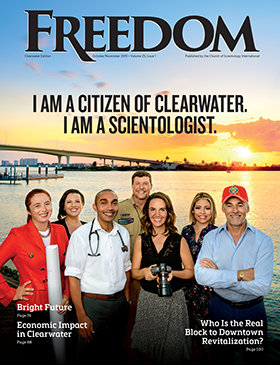
Latoya entered the foster care system in Brooklyn, New York, as a baby, because her parents were young and couldn’t take care of her. She was physically abused when she was 4 by her foster parents. She was put on Seroquel, an antipsychotic drug meant to treat bipolar disorder, “when I was like 13, when I went into the group home. … And it was a high dosage, as well,” Latoya, now 31, says. The drug “made my hair fall out around the edges, and it made me extremely sleepy and drowsy.
“They psyched me [put her in a psychiatric ward] against my will, and when I got to the hospital … I was given a needle, and I was like, ‘What’s going on here?’ They just started giving me medicine. No one told me I was going to be on medicine. I just thought it was the protocol, and I followed it.”
Eventually, she was given a glimmer of hope. “One of the group homes informed me that it was my choice to take medicine, which I did not know.” However, in the foster care system, hope is often short-lived. “I told my social worker that I no longer wanted to be on medicine, that it was making my hair fall out, and she tried to blackmail me. She told me that if I don’t take the medicine, they would send me away to one of the other group homes … a lockdown facility.”
As do most of the 600,000 kids in foster care nationwide, Latoya knew she was being mistreated. “I just felt like my rights were violated, and I was doing something that I did not want to do. … There was a stigma attached to it.”
Despite the stigmatization of foster kids, the psychiatrists who prescribe the drugs aspire to mansions, luxury cars and early retirements. “It’s all a money-making business for them,” Latoya says. Psychiatrists, the group homes that receive state and federal funding and foster parents typically are paid more to take care of children who are diagnosed with psychiatric disorders—thousands of dollars per month in some cases, though the amounts differ by state and diagnoses—than for “normal” foster kids.
In 2008, Gabriel Myers was removed from his mother’s care when she was found slumped in her car in Broward County, Florida, surrounded by illegal narcotics. He was later sexually molested by a 14-year-old boy while visiting a relative in Ohio. He entered Florida’s foster care system at the age of 5, and then began to act out sexually with other children. Each behavioral challenge Gabriel exhibited caused his caregivers to punish him, which perpetuated the cycle of sadness and frustration he felt, according to Florida Department of Children and Family (DCF) reports.
Dr. Sohail Punjwani, a psychiatrist, prescribed drugs to Gabriel, without a court order or parental consent, in violation of Florida law. One of those drugs is Symbyax, a combination of an antipsychotic drug and an antidepressant used to treat bipolar disorder. Symbyax carries a “black box” warning stating that the drug can cause suicidal thoughts and behaviors in children.
While being looked after by a 19-year-old “of limited intellectual and articulation abilities,” according to an FBI Behavioral Analysis Unit report, Gabriel was sent to his room and said that “he is mad and that he was going to kill himself.” On April 19, 2009, Gabriel hanged himself with a detachable shower cord.
Dr. Punjwani had “already been sanctioned for over-prescribing medications to patients, and for the age-inappropriate prescription of medication to Gabriel Myers,” according to the FBI report. It concluded that the “combination of the prescription of psychotropic medications to a 7-year-old boy and the lack of proper supervision and/or failure to centralize responsibility of treatment of Gabriel Myers is a significant contributor to his mental state at the time of his death.”
Floridians were outraged by Gabriel’s suicide, especially when at first his caretakers were deemed not to have played a role in what was originally determined to be an “accidental death.” Yet even this high-profile case and the calls for action it generated did little to change the foster care system in the Sunshine State or elsewhere. Child Protective Services (CPS), the Florida government behemoth that theoretically intervenes on children’s behalf when abuse or neglect is evident, frequently facilitates the abuse by placing kids in foster care.
Carlos Morales, a former CPS employee who wrote the book Legally Kidnapped: The Case Against Child Protective Services, told the “Lions of Liberty” podcast that foster children are “seven to eight times more likely to be physically or sexually abused and six times more likely to die than if they stayed in an impoverished household. They are also three times more likely to be put on psychotropic drugs.”
Speaking about his role as a CPS employee, Morales said: “In many cases, what we were doing was unjust, unethical, immoral and plain wrong by anyone’s definition, unless, of course, that person is a sociopath.”
Because psychiatrists are medical doctors, people assume that they have their patients’ best interests at heart. The damage that psychiatrists cause by drugging foster care children, however, is undeniable, and that drugging is often driven by greed. Pharmaceutical companies have spent tens of millions of dollars wining and dining doctors who prescribe their drugs. As a result, in the California foster care system, the largest in the country with more than 79,000 children, nearly one out of every four adolescents in 2012 took psychiatric drugs—and 13.5 percent of all of the state’s foster kids were on them.
A 2011 Government Accountability Office report found conditions worse in some states. In Texas, 58 percent of foster care children 13-17 years old were on at least one psychiatric drug and 9.1 percent of foster care children 5 years old or younger were on at least one such drug. Massachusetts had 53.4 percent of foster care children 13-17 years old on at least one psychiatric drug.
Although these facts are disturbing, what’s worse is that many of the foster kids are on anti-psychotics—the most powerful class of psychiatric drugs, which are approved by the government only for people suffering from paranoia, hallucinations and schizophrenia. Pharmaceutical companies have sold more than $226 million in just the last decade in California by convincing psychiatrists to prescribe these dangerous drugs to children.
Even worse, some doctors prescribe two anti-psychotics to foster kids. According to “The Truth Docs,” an article in a series by San Jose Mercury News called “Drugging Our Kids,” “the simultaneous use of two antipsychotics is widely rejected by medical professional groups and in many states.” Yet in California, Dr. Harinder Grewal “prescribed an antipsychotic to 115 foster children during the examined period; 26 percent of them received multiple antipsychotics for more than 60 days. From 2010 to 2013, she received $471,665 for drug company research.”
To help improve the conditions for foster children and to decrease the number of psychiatric drugs they are forced to ingest, Congress and various organizations have championed legislation that has either passed or is pending. Congress in 2011 enacted the Fostering Innovations and Improvements in Child Welfare Act, which threatened to withhold billions of dollars in federal funds if states didn’t implement ways to oversee the prescribing of psychotropic drugs to foster kids.
Spurred on by the repeated life-threatening drug cocktails given to 10-year-old Henry A. in Nevada, the National Center for Youth Law filed a class-action suit on behalf of the state’s foster kids, then sponsored three California bills, SB 238, 319 and 484, all of which addressed different aspects of foster care drugging and were supported and promoted by Citizens Commission on Human Rights (CCHR).
California State Senator Holly Mitchell, D-Los Angeles, wrote Senate Bill 238, whose summary says that it “Requires foster parents, child welfare workers, group home administrators [to] receive training on psychotropic medication, trauma and behavioral health. Also requires Department of Social Services to alert social workers when multiple medications, high dosages or prescriptions for children 5 and younger are prescribed.”
California State Senator Jim Beall, D-San Jose, wrote SB 319, which is summarized this way: “Expands duties of foster care public health nurses to include monitoring and oversight of children prescribed psychotropic medication.” Sen. Beall also wrote SB 484, which requires the “state to identify and inspect group homes that may be inappropriately administering psychotropic medications.”
All three bills were signed into law by Governor Jerry Brown in October 2015. Anna Johnson, a policy analyst with the National Center for Youth Law, says, “The implementation of the bills has just begun. We will need at least three years to establish a basic trend line.”
Assembly Bill 1067, backed by California Assemblyman Mike Gipson, D-Carson, calls for the enforcement of foster kids’ rights and currently awaits Gov. Brown’s signature. Gipson says, “I think our young people want to be heard, especially when it comes down to their care. We need to allow our young people to experience life.”
Yet as encouraging as the passage of this legislation is, a report released in August by the California State Auditor should tamp down enthusiasm. For example, the report stated that, “18 of 80 children whose files were reviewed in 2014-2015 had been “authorized to take psychotropic medications in dosages that exceeded the state’s recommended maximum limits. … [T]he counties did not contact the prescribers to ensure the safety and necessity of the medications in question, as the state guidelines recommend.” If neither doctors nor social workers obey the law, then passing new legislation is pointless.
Because of bad luck, children end up in foster care, and society must prevent unscrupulous psychiatrists, pharmaceutical companies and social workers from preying upon them. “These children have been through enough without being used as lab rats,” says Jim Black, founder of Angel Eyes over Texas, a Child Protective Services watchdog.
As Latoya says of her fellow group home residents, “They were really, really good kids. They were just easily manipulated.”

































